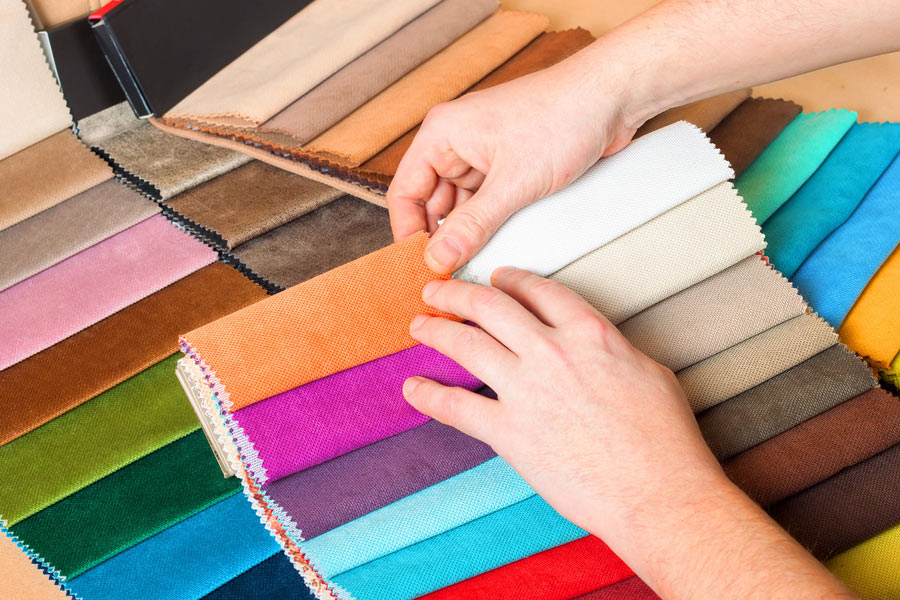
12 Jul Textile Medley: Mixing Fabrics for Dynamic DIY Upholstery Projects
There’s something incredibly satisfying about creating your own upholstery projects. The idea of transforming an old piece of furniture into a stunning centerpiece is enough to make any DIY enthusiast’s heart race. And what if you could take it a step further? Mixing different fabrics in your upholstery projects can open up a whole new world of creativity and aesthetic delight. Let’s dive into the art of fabric mixing and discover how it can elevate your DIY upholstery game.
Understanding Fabric Mixing in Upholstery
Benefits of Fabric Mixing
Mixing fabrics isn’t just about throwing together different materials—it’s an art form that can turn a bland piece of furniture into a vibrant work of art. Combining various textures, patterns, and materials can add layers of visual interest and design versatility. Imagine a sofa with a mix of plush velvet, durable canvas, and intricate patterns—each fabric adds its own unique flair, creating a dynamic and personalized look.
Moreover, mixing fabrics allows you to tailor your upholstery projects to match your décor themes and personal preferences. Whether you’re aiming for a boho-chic vibe or a sleek, modern aesthetic, the right combination of fabrics can help you achieve your desired look.
Types of Fabric Combinations
There are countless ways to mix fabrics, but here are some popular techniques:
- Mixing Solids with Patterns: Combining solid colors with patterned fabrics can create a balanced yet exciting visual contrast. For instance, pairing a solid navy fabric with a bold, geometric pattern can make a statement without overwhelming the space.
- Contrasting Textures: Mixing different textures—like pairing a soft, plush fabric with a rough, woven material—adds depth and tactile interest to your project.
- Complementary Color Schemes: Using colors that complement each other on the color wheel can create a harmonious look. For example, combining shades of blue with orange accents can produce a striking yet cohesive design.
Choosing Fabrics for Mixing
Considerations for Fabric Compatibility
When selecting fabrics to mix, it’s essential to consider their compatibility. Here are some tips:
- Weight and Durability: Ensure the fabrics you choose have similar weights and durability. Combining heavy and light fabrics can cause structural issues and uneven wear.
- Care Requirements: Choose fabrics with similar care instructions to make maintenance easier. Mixing fabrics with different cleaning needs can complicate upkeep.
- Visual Balance: Aim for a balance in the visual weight of your fabrics. Mixing too many bold patterns or colors can overwhelm the design, while too many neutrals can make it look flat.
Tips for Color and Pattern Coordination
Coordinating colors and patterns is crucial for a cohesive design. Here are some strategies:
- Use a Color Wheel: A color wheel can help you identify complementary colors and create a balanced palette.
- Mood Boards: Creating a mood board with fabric swatches, paint chips, and photos can help you visualize how your fabrics will look together.
- Digital Design Tools: Online tools and apps can also assist in visualizing fabric combinations before you start your project.
Practical DIY Upholstery Techniques
Mixing Fabrics in Upholstery Projects
Integrating multiple fabrics into your upholstery projects requires some technique. Here are step-by-step instructions:
- Seam Allowances: When sewing different fabrics together, ensure you leave adequate seam allowances to prevent fraying and maintain structural integrity.
- Pattern Alignment: Pay attention to pattern alignment, especially when working with patterned fabrics. Misaligned patterns can disrupt the visual flow.
- Fabric Transitions: Use piping or decorative trims to create smooth transitions between different fabrics. This adds a professional touch and helps define different sections.
Creative Fabric Applications
Get creative with your fabric mixing! Here are some ideas:
- Accent Panels: Use contrasting fabrics for accent panels on chairs or sofas to create focal points.
- Piping Details: Add piping in a different fabric to highlight the edges and seams of your upholstery.
- Reversible Cushions: Create cushions with different fabrics on each side for versatile, reversible options.
Maintaining Consistency and Quality
Ensuring Durability and Longevity
Quality is key to ensuring your mixed fabric projects stand the test of time. Here are some tips:
- High-Quality Fabrics: Invest in high-quality fabrics with good durability ratings. Upholstery fabrics are rated for their abrasion resistance, which is crucial for long-lasting projects.
- Maintenance Tips: Regularly vacuum and clean your upholstered pieces according to the fabric care instructions. Address stains promptly to maintain the fabric’s appearance.
Conclusion
Mixing fabrics in your DIY upholstery projects can transform ordinary furniture into extraordinary pieces. The benefits are endless—from enhanced visual interest and personalized designs to the sheer joy of seeing your creative vision come to life. So, don’t be afraid to experiment with different fabric combinations. With thoughtful planning and quality craftsmanship, you can create stunning, one-of-a-kind pieces that reflect your unique style. Happy upholstering!


